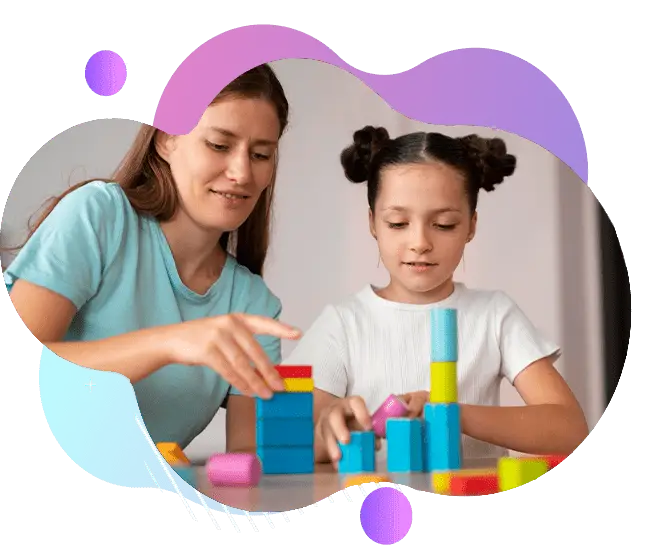

Occupational therapists use various interventions to improve writing skills. Key techniques include:
Handwriting Skills: Enhancing muscle strength, grip, and letter formation. Adaptive tools like specialized grips and ergonomic surfaces may be recommended.
Visual Perceptual Training: Activities to improve skills such as discrimination, memory, and spatial relations for accurate writing.
Motor Planning Exercises: Developing effective writing movements and coordination.
Spatial Awareness: Improving positioning and organization of written content for better outcomes.
These interventions help individuals develop efficient and accurate writing skills.

Handwriting interventions use strategies to improve writing skills, including:
Muscle Strengthening: Activities like squeezing therapy putty to enhance hand strength.
Grip Refinement: Exercises with various writing utensils (e.g., pencils, crayons) to improve grip patterns.
High Intensity: Children typically receive 20 to 40 hours of one-on-one therapy weekly, with intensity adjusted as they progress.
Letter Formation: Practicing proper letter formation through tracing, worksheets, and interactive games.
Legibility: Focusing on letter sizing, spacing, and alignment for better readability.
These techniques help develop more efficient and legible handwriting.


Adaptive writing tools enhance writing skills through:
Specialized Tools: Recommending and training on adapted grips, weighted pens, and ergonomic surfaces.
Customization: Modifying existing utensils, such as adding grips or enlarging pencil grips, to fit individual needs.
These tools and modifications improve grasp stability and writing control.

Visual perceptual training includes activities to boost essential writing skills:
Visual Discrimination: Tasks like identifying similar or different letters and shapes.
Visual Memory: Exercises to remember and reproduce patterns or sequences.
Spatial Relations: Activities to arrange objects or shapes correctly.
Additional Skills: Improving figure-ground perception, depth perception, and visual closure for better writing accuracy and efficiency.
These activities enhance overall writing performance by refining visual perception abilities


Motor planning exercises enhance writing skills through:
Motor Sequencing and Coordination: Activities like finger plays, finger painting, and stringing beads to improve motor control.
Bilateral Coordination: Tasks that involve using both hands, such as playing with LEGO® bricks, to develop coordination.
Hand-Eye Coordination: Exercises that strengthen the connection between visual input and motor response for better writing fluency and precision.
These exercises build the motor skills needed for effective and precise writing.

Sensory integration techniques help children with sensory processing difficulties by:
Regulating Sensory Input: Using deep pressure tools like weighted vests or blankets to improve focus.
Proprioceptive Activities: Engaging in heavy work tasks or body brushing to promote self-regulation.
These strategies enhance attention and writing performance by addressing sensory challenges.


Optimize the child’s writing environment by:
Seating Adjustments: Providing supportive seating with proper back support and footrests.
Organizing Materials: Keeping pencils, erasers, and paper within easy reach to reduce distractions.
Lighting Optimization: Reducing glare or shadows to enhance visibility.
These modifications create a comfortable and organized space, promoting focused and effective writing.

Implement assistive technology to support writing by:
Introducing and Training: Teaching children how to use tools like speech-to-text software and specialized writing apps.
Ongoing Support: Offering continuous troubleshooting and assistance for effective tool integration.
Collaboration: Working with educators to tailor technology solutions to the child’s specific writing needs and goals.
These practices enhance the successful use of assistive technology in writing development.




Occupational therapists use various interventions, including handwriting skills enhancement, visual perceptual training, motor planning exercises, and spatial awareness activities. These techniques help strengthen hand muscles, improve grip, and enhance the organization and legibility of written content.
Adaptive writing tools, such as specialized grips, weighted pens, and ergonomic surfaces, are recommended to improve grasp stability and writing control. These tools are customized to meet individual needs, making writing more comfortable and effective.
Visual perceptual training includes activities that improve visual discrimination, memory, and spatial relations. These exercises help children better recognize letters, shapes, and patterns, leading to more accurate and efficient writing skills.
Motor planning exercises enhance writing by improving motor sequencing, coordination, and hand-eye coordination. Activities like finger plays, stringing beads, and bilateral coordination tasks strengthen the motor control needed for smooth and precise writing.
Environmental modifications, such as providing supportive seating, optimizing lighting, and organizing materials within easy reach, create a comfortable and distraction-free space. These adjustments help children focus better and perform more effectively in writing tasks.
